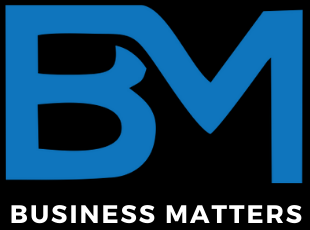Launching a new project is much like laying the foundation of a building. Without a strong, structured, and well-defined base, the entire project can face challenges later. The project startup phase is the most crucial stage of any project lifecycle because it defines the direction, goals, responsibilities, and structure of the entire initiative. In this detailed blog, we will explore what the primary focus areas should be during the project startup phase, why they matter, and how organizations can ensure a successful start.
Understanding the Project Startup Phase
The project startup phase (often called the initiation phase) is the first stage of a project’s lifecycle. During this stage, project managers and stakeholders define the project’s purpose, identify objectives, allocate resources, and ensure alignment with organizational goals. It sets the tone for execution and significantly impacts the project’s success.
If this phase is not handled with care, projects often face issues like scope creep, miscommunication, budget overruns, and missed deadlines.

Importance of the Project Startup Phase
- Clarity of Objectives: Helps ensure everyone understands what the project is supposed to achieve.
- Risk Management: Identifies potential challenges early and develops mitigation strategies.
- Stakeholder Alignment: Brings decision-makers, clients, and team members on the same page.
- Resource Planning: Ensures that the necessary resources—time, budget, and workforce—are allocated efficiently.
- Higher Success Rates: Research shows that projects with clear startup plans are more likely to meet goals.
Primary Focus Areas During Project Startup Phase
Let’s now explore the core areas that demand maximum focus when a project is launched.
1. Defining Clear Objectives and Goals
The most critical aspect during project startup is to define the “why” of the project. Without a clear objective, even the most well-resourced projects can fail.
- Key Actions:
- Create SMART goals (Specific, Measurable, Achievable, Relevant, Time-bound).
- Align goals with overall business objectives.
- Document both short-term and long-term goals.
- SEO Tip: Use target keywords like project objectives, project goals, project initiation stage in your documentation.
2. Stakeholder Identification and Engagement
Projects are collaborative efforts that involve various stakeholders such as clients, sponsors, vendors, and team members. Identifying and engaging stakeholders early is critical.
- Key Actions:
- Create a stakeholder register.
- Define their roles, influence, and expectations.
- Establish communication channels and reporting frequency.
This ensures transparency and reduces conflicts in later stages.
3. Defining Scope and Deliverables
Project failure often results from poorly defined scope. The project scope describes the boundaries of the project, including what will and won’t be delivered.
- Key Actions:
- Write a clear Scope Statement.
- Develop a Work Breakdown Structure (WBS).
- Document deliverables with timelines.
This avoids scope creep and helps manage client expectations.
4. Resource Allocation and Planning
Resources include human capital, tools, software, financial resources, and infrastructure. Proper planning ensures that resources are not wasted and are distributed optimally.
- Key Actions:
- Create a resource management plan.
- Allocate team members based on skills and availability.
- Secure budget approvals early.
5. Risk Assessment and Mitigation Planning
Every project faces risks—whether related to budget, timelines, or technical challenges. The project startup phase is the right time to identify and document them.
- Key Actions:
- Conduct a risk analysis workshop.
- Identify risks using techniques like SWOT analysis.
- Create a risk register with mitigation strategies.
6. Defining Roles and Responsibilities
Clear accountability is essential for successful execution.
- Key Actions:
- Use a RACI Matrix (Responsible, Accountable, Consulted, Informed).
- Assign responsibilities to avoid duplication of work.
- Establish leadership roles.
7. Project Governance and Communication Plan
Without a robust governance framework and communication plan, even well-planned projects can falter.
- Key Actions:
- Define governance policies.
- Set reporting structures (weekly reports, dashboards).
- Establish communication platforms (Slack, Teams, Emails).
8. Creating a Project Charter
A project charter is the official document that authorizes a project. It provides a high-level overview of objectives, stakeholders, risks, and resources.
- Benefits:
- Acts as a reference document.
- Formalizes approval from stakeholders.
- Provides authority to project managers.
9. Defining Success Criteria and KPIs
It’s not enough to complete a project; it must be successful in meeting its objectives.
- Key Actions:
- Define key performance indicators (KPIs).
- Set measurable milestones.
- Create evaluation methods for performance.
10. Selecting the Right Tools and Technology
The right project management tools simplify communication, planning, and tracking.
- Popular Tools:
- Trello, Asana, Jira for task management.
- MS Project or Primavera for complex scheduling.
- Slack, Microsoft Teams for collaboration.
Challenges in the Project Startup Phase
Even with the best practices, organizations often face these common challenges:
- Unclear goals or changing objectives.
- Lack of stakeholder engagement.
- Insufficient resources or budget.
- Poor communication.
- Unrealistic timelines.
Best Practices for a Successful Project Startup
- Document Everything: Written documents prevent miscommunication.
- Engage Stakeholders Early: Don’t wait until later to involve them.
- Plan for Risks: Expect the unexpected.
- Prioritize Communication: Transparency is key.
- Leverage Technology: Use tools for efficient project tracking.
SEO Optimization Tips for Project Startup Blogs
To make this content rank better on search engines:
- Use primary keywords such as project startup phase, project initiation, project planning multiple times.
- Use long-tail keywords like best practices in project startup phase or primary focus in project initiation.
- Include FAQs for featured snippets.
- Add internal and external links for credibility.
FAQs
Q1. What is the main purpose of the project startup phase?
The main purpose is to define objectives, scope, stakeholders, and resources, ensuring clarity before execution begins.
Q2. What are the key documents created during the project startup phase?
Key documents include the project charter, scope statement, stakeholder register, and risk register.
Q3. How do you measure success in the startup phase?
Success can be measured by stakeholder alignment, clear documentation, and readiness for the planning phase.
Q4. What role does a project manager play in the startup phase?
The project manager ensures goals are defined, stakeholders are engaged, and resources are allocated.
Conclusion
The primary focus area during the project startup phase is to establish a strong foundation that aligns objectives, stakeholders, scope, and resources. Without a structured approach at this stage, projects risk failure due to misalignment, scope creep, or poor planning. By emphasizing clear communication, risk management, stakeholder engagement, and documentation, organizations can significantly improve their chances of success.
In essence, a well-managed project startup phase is the difference between project success and failure. By focusing on these key areas, businesses can ensure smooth execution and long-term value delivery.

